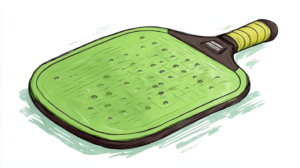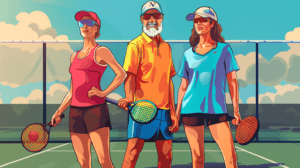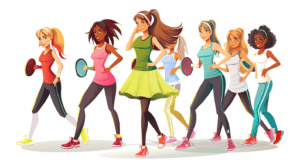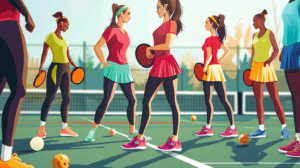Illegal Pickleball Serves – Everything You Need To Know
Last updated
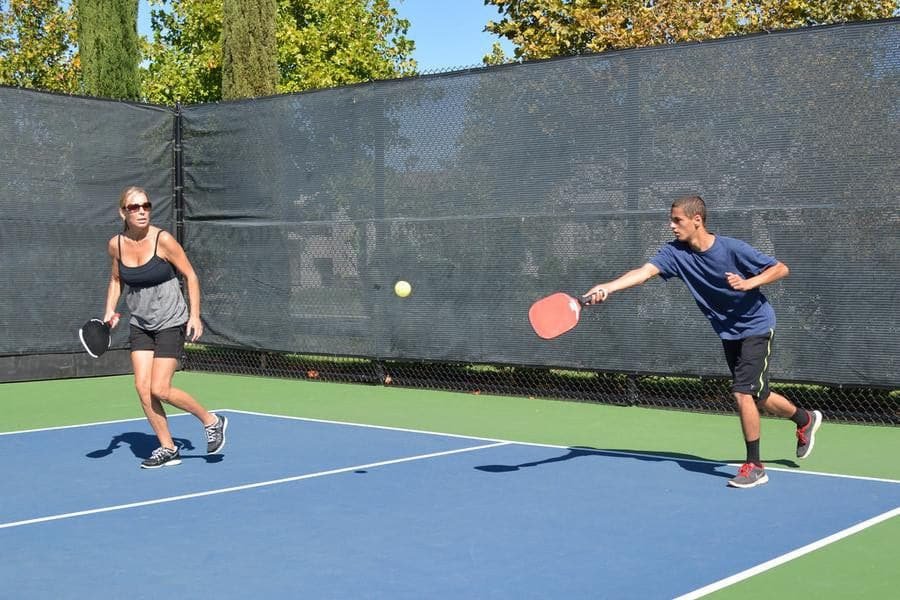
Understanding and mastering the legal techniques for pickleball serves, in accordance with the rules of pickleball set by USA Pickleball, is crucial as the fear of committing an illegal serve is a common challenge for players.
In this guide, we will delve into the differences between legal serves like the volley, drop, and sidearm and the illegal ones. Learn the pickleball serves you need to ensure you play by the rules and enhance your skills on the court.
Top Illegal Pickleball Serves You Must Avoid
Awareness of what constitutes an illegal serve is crucial to excel in pickleball. Each type of illegal serve, such as the spin serve or a serve with an improper upward motion, can lead to faults and penalties, impacting the game’s flow and fairness.
The Missed Serve
A fundamental rule in pickleball is properly contacting the ball during a serve. Missed serves occur when the server fails to strike the ball, leading to an immediate fault.
This can happen for various reasons, such as when trying to serve the ball with too much precision, from miscalculation to environmental factors like wind.
Maintaining focus and practicing consistent serves are crucial to avoiding this common mistake.
Baseline Faults
The server must serve from behind the baseline, ensuring they are entirely within the correct area. The ball must be served without touching or crossing it. Stepping on or over the baseline during the serve is considered a baseline fault, resulting in an illegal serve.
Players should focus on their foot placement and balance during the serve, as they must be behind the baseline to prevent this error. It’s a subtle yet significant rule that requires attention to detail and practice to master.
High Toss Serve
A serve must be initiated with a minimal upward toss of the ball. However, the high toss serve, characterized by throwing the ball significantly above the head before striking, is illegal.
This type of serve can unfairly enhance power and spin. Players should focus on a controlled, modest toss, ensuring not to drop the ball too high, to prevent the ball from elevating excessively.
Double Hit Serve
Who Calls an Illegal Serve in Pickleball?
The determination of an illegal serve in pickleball – be it a missed serve, a serve beyond waist level, or a serve that hits a permanent object – typically falls under the purview of an authorized official or umpire.
In the absence of an official, players rely on the spirit of fair play and self-regulation, calling out faults and adhering to the official rules set forth by the International Federation of Pickleball.
The serve should be executed with a single, fluid motion. A double hit, where the paddle strikes the ball more than once, renders the serve illegal. This can happen inadvertently, especially when trying to impart spin or power.
A clean, single-stroke serve is crucial to avoid this fault and ensure the ball is hit cleanly and only once.
What Are The 5 Serving Rules in Pickleball?
Adhering to pickleball’s five core serving rules, as established by USA Pickleball(1), is crucial for executing a legal pickleball serve. This commitment to the rules ensures fair play and upholds the competitive integrity of the sport.
Serving Order in Doubles and Singles
In pickleball doubles play, alternating serves between partners after each fault is crucial. This approach ensures a balanced and orderly progression of the game.
Effective communication with your partner is key to maintaining the correct serve order, ensuring each serve is legal and avoiding faults for serving from the wrong side.
In singles, the serve alternates between the two players following each fault, necessitating constant readiness and adaptability for both serving and receiving.
Court Boundaries
The rules for pickleball serving require that serves land within the diagonal service box across from the server. A serve landing outside of these boundaries, such as in the non-volley zone or out of bounds, results in a fault.
Improving your game involves practicing precise aiming and control over your serves. This includes mastering both the traditional underhand serve and the drop serve to ensure they consistently land within the designated areas.
Legal Serve Techniques
Serving must be executed underhand, and the paddle head must be below waist level at the time of contact. This rule is designed to ensure fair play by limiting the power and speed of serves.
Mastering the mechanics of an effective underhand serve is essential. Understanding and practicing this serve technique is vital to ensure that each serve adheres to the rules of the game.
Service Rotation
Maintaining an accurate service rotation is essential in doubles. After each fault, the serve moves to the next player. This rotation introduces a strategic component to the game, as players must be prepared to adjust their playing style depending on their position and serving order.
In singles play, the serve alternates between players, requiring constant focus and strategic planning.
Faults and Re-serves
Two Basic Legal Pickleball Serves
Volley Serve
The volley serve is an underhand serve where the server’s arm moves in an upward arc, and the paddle contacts the ball below waist level. This serve style demands precise timing and skill, as it involves hitting the ball out of the air without letting it bounce.
The volley serve is advantageous for players who prefer a faster, more aggressive start to the rally, but it requires adherence to the underhand serving rule to be legal.
Drop Serve
The drop serve, a newer addition to pickleball rules, offers an alternative serving technique. In this serve, the player drops the ball, allowing it to bounce once before striking it.
This serve can be executed with more relaxed rules regarding the paddle position and swing motion, making it a more accessible option for beginners or those seeking a less complex serve.
The drop serve is particularly beneficial for players who struggle with the timing and coordination required for a traditional volley serve.
Can You Bounce the Ball on a Pickleball Serve?
No, bouncing the ball before a serve is not permitted in pickleball. This rule is a key distinction between pickleball and tennis, where bouncing the ball before serving is a common practice.
In pickleball, the serve must be direct and uninterrupted, requiring the server to hit the ball mid-air following the toss. This approach to serving speeds up the game and introduces an added level of challenge and precision.
Pickleball ensures a level playing field by eliminating the option to bounce the ball before serving. This rule prevents the server from potentially gaining an unfair advantage through the bounce, thus upholding the integrity and fairness of the game.
This unique aspect of pickleball emphasizes skill and quick reflexes, setting it apart from other racquet sports. Players in pickleball must adapt their serving techniques to comply with this rule.
The no-bounce government aligns with the sport’s dynamic and fast-paced nature and is central to its identity. It reflects pickleball’s commitment to fairness, skill, and continuous play.
The Importance of Adhering to Pickleball Rules
Adhering to pickleball rules, including those regarding serves and regulations for tournaments, goes beyond just avoiding penalties. It’s fundamentally about respecting the game, your opponents, and the spirit of pickleball itself.
For a beginner, this respect is crucial in fostering a competitive yet fair environment. Regular engagement with the rules and regulations, especially the intricate aspects of serving, such as how to serve as long as the rules allow, is more than a formality – it deepens your understanding and appreciation of the game.
By thoroughly knowing and practicing these regulations, you enhance your enjoyment and that of your fellow players, whether in casual play or in a tournament setting.
This commitment to the rules ensures that every match, regardless of the player’s experience level, is played in the true spirit of competition, where skill and strategy are paramount.
Illegal Pickleball Serves Conclusion
Understanding and mastering legal serves in pickleball, like the volley, drop, and sidearm, while avoiding illegal serves such as missed serves, baseline faults, high tosses, and double hits, is key to enhancing one’s game.
It’s important to familiarize oneself with the five main serving rules: sticking to the serving order, ensuring serves land within designated court boundaries, mastering the underhand serve technique, keeping up with service rotation, and knowing the nuances of faults and reserves.
Unlike in tennis, bouncing the ball before serving is a no-go in pickleball, adding a layer of skill and quick reflexes to the game.
By diligently practicing and adhering to these regulations, players can improve their gameplay and contribute to a fair, enjoyable, and competitive environment in the world of pickleball.


